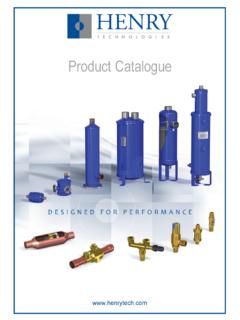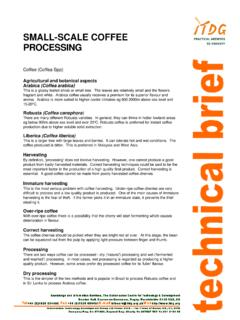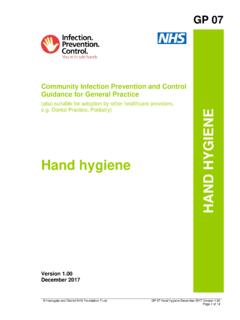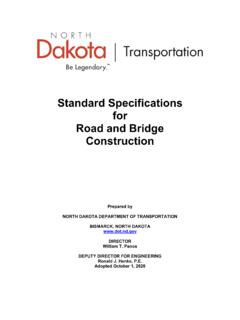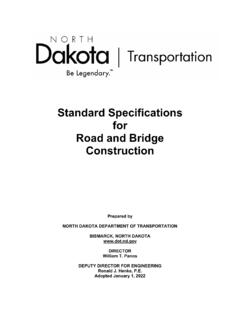Transcription of 9.10.1.1 Sugarcane Processing
1 6/97 Food And Agricultural Sugarcane General1-5 Sugarcane Processing is focussed on the production of cane sugar (sucrose) from Sugarcane . Otherproducts of the Processing include bagasse, molasses, and filtercake. Bagasse, the residual woody fiber of thecane, is used for several purposes: fuel for the boilers and lime kilns, production of numerous paper andpaperboard products and reconstituted panelboard, agricultural mulch, and as a raw material for production ofchemicals. Bagasse and bagasse residue are primarily used as a fuel source for the boilers in the generationof process steam. Thus, bagasse is a renewable resource. Dried filtercake is used as an animal feedsupplement, fertilizer, and source of Sugarcane wax. Molasses is produced in two forms: inedible forhumans (blackstrap) or as an edible syrup. Blackstrap molasses is used primarily as an animal feed additivebut also is used to produce ethanol, compressed yeast, citric acid, and rum.
2 Edible molasses syrups are oftenblends with maple syrup, invert sugars, or corn syrup. Sugarcane is produced and harvested for two purposes: production of cane sugar and use as seed forsubsequent plantings. In the United States, Sugarcane is produced, harvested, and processed in four states: Florida, Louisiana, Texas, and Hawaii. Cane sugar is refined in eight states: Florida, Louisiana, Texas,Hawaii, California, New York, Maryland, and the following sections, unrefined, or raw sugar is referred to as cane sugar . Following refining,the sugar is called refined sugar . Process Cane sugar Production -Hand cutting is the most common harvesting method throughout the world but some locations (e. g.,Florida, Louisiana and Hawaii) have used mechanical harvesters for several years. After cutting, the cane isloaded by hand, mechanical grab loaders, or continuous loaders. Cane is transported to the mills usingtrailers, trucks, railcars, or barges, depending upon the relative location of the cane fields and the processingplants.
3 When the cane is cut, rapid deterioration of the cane begins. Therefore, unlike sugarbeets, sugarcanecannot be stored for later Processing without excessive deterioration of the sucrose content. A simplified process flow diagram for a typical cane sugar production plant is shown inFigure The cane is received at the mill and prepared for extraction of the juice. At the mill, thecane is mechanically unloaded, placed in a large pile, and, prior to milling, the cane is cleaned. The millingprocess occurs in two steps: breaking the hard structure of the cane and grinding the cane. Breaking the caneuses revolving knives, shredders, crushers, or a combination of these processes. For the grinding, or milling,of the crushed cane, multiple sets of three-roller mills are most commonly used although some mills consist offour, five, or six rollers in multiple sets. Conveyors transport the crushed cane from one mill to the next.
4 Imbibition is the process in which water or juice is applied to the crushed cane to enhance the extraction ofthe juice at the next mill. In imbibition, water or juice from other Processing areas is introduced into the lastmill and transferred from mill to mill towards the first two mills while the crushed cane travels from the firstto the last mill. The crushed cane exiting the last mill is called bagasse. The juice from the mills is strainedto remove large particles and then clarified. In raw sugar production, clarification is done almost exclusivelywith heat and lime (as milk of lime FACTORS6/97 Figure Simplified process flow diagram for cane sugar production.(Source Classification Codes in parentheses.)6/97 Food And Agricultural saccharate); small quantities of soluble phosphate also may be added. The lime is added to neutralizethe organic acids, and the temperature of the juice raised to about 95EC (200EF).
5 A heavy precipitate formswhich is separated from the juice in the clarifier. The insoluble particulate mass, called mud , is separatedfrom the limed juice by gravity or centrifuge. Clarified juice goes to the evaporators without additionaltreatment. The mud is filtered and the filtercake is washed with water. Evaporation is performed in two stages: initially in an evaporator station to concentrate the juice andthen in vacuum pans to crystallize the sugar . The clarified juice is passed through heat exchangers to preheatthe juice and then to the evaporator stations. Evaporator stations consist of a series of evaporators, termedmultiple-effect evaporators; typically a series of five evaporators. Steam from large boilers is used to heat thefirst evaporator, and the steam from the water evaporated in the first evaporator is used to heat the secondevaporator. This heat transfer process continues through the five evaporators and as the temperaturedecreases (due to heat loss) from evaporator to evaporator, the pressure inside each evaporator also decreaseswhich allows the juice to boil at the lower temperatures in the subsequent evaporator.
6 Some steam is releasedfrom the first three evaporators, and this steam is used in various process heaters in the plant. The evaporatorstation in cane sugar manufacture typically produces a syrup with about 65 percent solids and 35 percentwater. Following evaporation, the syrup is clarified by adding lime, phosphoric acid, and a polymerflocculent, aerated, and filtered in the clarifier. From the clarifier, the syrup goes to the vacuum pans of the sugar starts in the vacuum pans, whose function is to produce sugar crystalsfrom the syrup. In the pan boiling process, the syrup is evaporated until it reaches the supersaturation stage. At this point, the crystallization process is initiated by seeding or shocking the solution. When thevolume of the mixture of liquor and crystals, known as massecuite, reaches the capacity of the pan, theevaporation is allowed to proceed until the final massecuite is formed.
7 At this point, the contents of thevacuum pans (called strike ) are discharged to the crystallizer, whose function is to maximize the sugarcrystal removal from the massecuite. Some mills seed the vacuum pans with isopropyl alcohol and groundsugar (or other similar seeding agent) rather than with crystals from the process. From the crystallizer, themassecuite (A massecuite) is transferred to high-speed centrifugal machines (centrifugals), in which themother liquor (termed molasses ) is centrifuged to the outer shell and the crystals remain in the innercentrifugal basket. The crystals are washed with water and the wash water centrifuged from the crystals. The liquor (A molasses) from the first centrifugal is returned to a vacuum pan and reboiled to yield asecond massecuite (B massecuite), that in turn yields a second batch of crystals. The B massecuite istransferred to the crystallizer and then to the centrifugal, and the raw sugar is separated from the molasses.
8 This raw sugar is combined with the first crop of crystals. The molasses from the second boiling (Bmolasses) is of much lower purity than the first molasses. It is reboiled to form a low grade massecuite (Cmassecuite), which goes to a crystallizer and then to a centrifugal. This low-grade cane sugar is mingled withsyrup and is sometimes used in the vacuum pans as a seeding solution. The final molasses from the thirdstage (blackstrap molasses) is a heavy, viscous material used primarily as a supplement in cattle feed. Thecane sugar from the combined A and B massecuites is dried in fluidized bed or spouted bed driers and cooled. After cooling, the cane sugar is transferred to packing bins and then sent to bulk storage. Cane sugar is thengenerally bulk loaded to trucks, railcars, or barges. Refined sugar Production -A simplified process flow diagram for refined sugar production is shown in Figure Canesugar is refined either at the same location where it was produced as part of an integrated facility or atseparate raw sugar refineries.
9 The initial step in cane sugar refining is washing the sugar , called affination,with warm, almost saturated syrup to loosen the molasses film. This is followed by separation of the crystalsfrom the syrup in a centrifugal and washing of the separated crystals with hot water or a FACTORS6/97 Figure Simplified process flow diagram for refined sugar production.(Source Classification Codes in parentheses.)6/97 Food And Agricultural sweetwater. If the refinery is part of the cane sugar production facility, the cane sugar may be washedmore heavily in previous steps and the affination step washed raw sugar is sent to a premelter and then to a melter, where it is mixed with high-puritysweetwaters from other refinery steps and is steam heated. The resultant syrup is passed through a screen toremove any particulate in the syrup and sent to the clarification step. The syrup from the crystal washing,called affination syrup, is transferred to a remelt Processing station or reused in the raw sugar washing step.
10 In the remelt station, the syrup volume is reduced to form the massecuite, and the sugar crystals are separatedfrom the syrup. The separated liquor is blackstrap molasses. The sugar crystals are sent to a melter and thento the clarification step. Two clarification methods are commonly used: pressure filtration and chemicaltreatment; chemical clarification is the preferred method. Two chemical methods are commonly used: phosphatation and carbonation; both processes require the addition of lime. The phosphatation usesphosphoric acid, lime (as lime sucrate to increase solubility), and polyacrylamide flocculent to produce acalcium phosphate floc. Air flotation is usually used to separate the floc from the liquor and the flocskimmed from the liquor surface. Carbonation consists of adding lime to the raw melter liquid and thenbubbling carbon dioxide (CO) through the liquor to produce a calcium carbonate precipitate.










